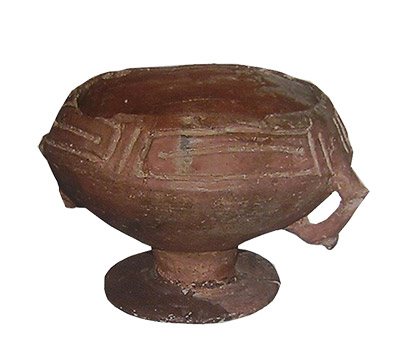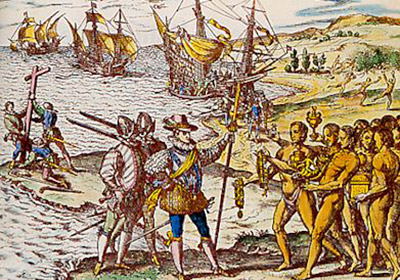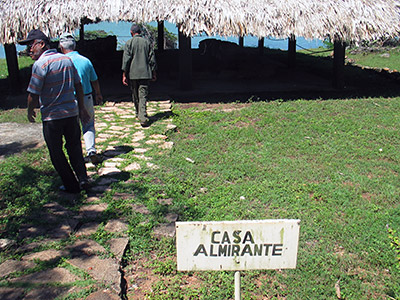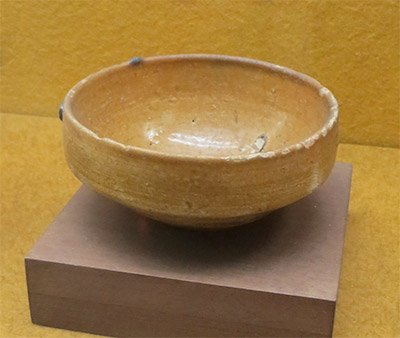Research project
Values and valuables
The role of material culture in early colonial encounters in the Caribbean
- Duration
- 0
- Contact
- Floris Keehnen
- Funding
-
 NWO PhDs in the Humanities (grant no. PGW-13-02).
NWO PhDs in the Humanities (grant no. PGW-13-02).
- Partners
Museo del Hombre Dominicano, Santo Domingo, Dominican Republic.

How can we characterize the role of material culture in early colonial encounters in the Caribbean (1492-1800)?
An Introduction: Trinkets (f)or Treasure?
On 12 October, 1492 the Old and New World first connected when Christopher Columbus and his crew came into contact with the indigenous people of the Caribbean. The earliest chronicles indicate that from first encounters Amerindians and Europeans were involved in exchange relationships, bartering gold, cotton and parrots for such small items as glass beads, brass bells and pieces of glazed ceramics.
What? These Caribbean Indians gave away gold for beads?! Why would they do that?

Well, although this transaction seems utterly unfair from a modern perspective, when the exchange is viewed from the value that indigenous and European peoples attributed to the things exchanged, each party actually considered it a fair trade.
We know that the material qualities these European goods possessed and the symbolic values they conveyed were similar to or commensurable with the core values of Amerindian culture and society (see MA thesis: Trinkets (f)or Treasure?).

Thus, despite dramatic differences in worldviews, values, and aesthetics, European trade wares were rapidly absorbed into indigenous networks. Archaeologically, these objects have been found in early colonial indigenous settings across the Greater and Lesser Antilles, hinting at a continued Amerindian interest for these kinds of wares.
At the moment we do not know much about the role these European trade items played in these early colonial encounters. What objects are we actually talking about? How could Amerindians consider these trinkets as treasure? How did they use them? And, did this all change, or not? That is what this research is all about.

Research Outline: 3 Phrases, 3 Phases, 3 Places
The main research objective of this project is to examine the Amerindian attitudes towards new forms of material culture related to the differential impacts of early colonial encounters in the Caribbean. The main research questions centre around three key terms:
-
Acquisition – what kinds of objects were obtained, how and in what contexts;
-
Valuation – what did these objects mean to Amerindians; and;
-
Incorporation – what did indigenous communities do with European-introduced objects?
The project takes a multidisciplinary approach combining archaeological and ethnohistorical information, collection research, and archaeological and anthropological theory. It involves a diachronic and multiscalar comparative analysis that is based on three phases of the encounter in three case-study areas:
-
Dominican Republic, the location of the earliest Amerindian-European interactions (1492 - c. 1525);
-
Cuba, the island characteristic of the Spanish encomienda or forced labour system (16 th century);
-
Lesser Antilles; the islands that were colonized relatively late, involving different European colonial powers, and where indigenous resistance lasted longest (16 th-18 th centuries).
Materials and Methods
A selected number of archaeological assemblages of early colonial (indigenous) sites throughout the Caribbean will be studied, both by means of reviewing literature and by investigating local museum/private collections. Ethnohistorical information on indigenous-European exchanges will be drawn from early European chroniclers such as Christopher Columbus (1451-1506), Bartolomé de Las Casas (1484-1566), Gonzalo Fernández de Oviedo y Valdés (1478-1557), and others. Theoretically, insights from colonial encounters, value systems and material culture theory are applied to put in perspective the nature and dynamics of the social and material relations between Amerindians and Europeans.

In the end, this research will contribute to the construction of a more nuanced view of the indigenous engagement with new material culture after contact and as such contribute to current debates regarding material culture and cross-cultural interactions in colonial encounter situations.
